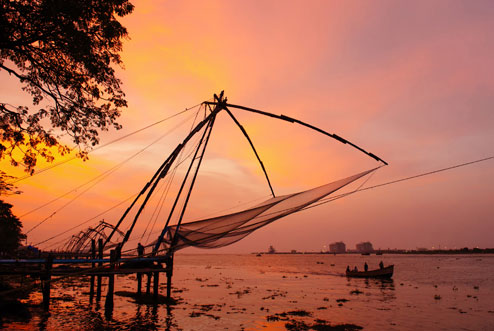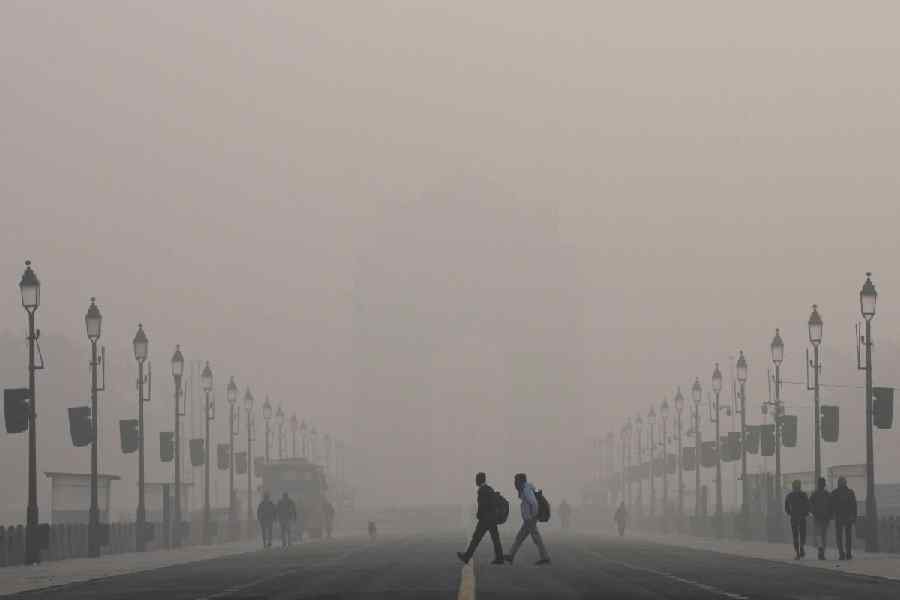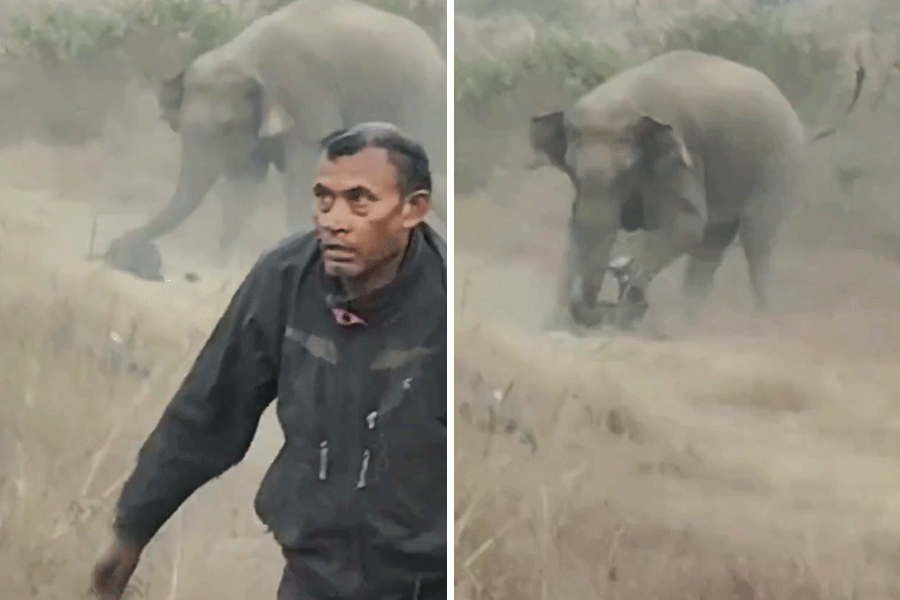CROSSINGS

MANY YEARS ago, when I used to be a teacher of literature, I realised how difficult it is to teach the poetry of nature in an outdoor setting. During the spring and summer terms in England, I would try to take my tutorials in the college gardens or by the river because it was so lovely outside. But even the best of the nature poets turned wordy and stale when taught in the presence of real birds and flowers and grass. Whatever I said sounded silly, before being blown away by a fragrant breeze. Poems are artifacts, and come truly alive inside rooms, in the midst of tables and chairs and books, rather than "rocks, and stones, and trees" (as Wordsworth puts it in a little poem). Is that why a "stanza" originally meant a chamber - a "standing-place" in which a poem is realised by the poet, reader or listener?
This experience came back to me in Kochi, during the opening week of the biennale a few weeks ago, when I tried to interest myself in the art - some of it extremely good - that was all around me in the close and overwhelming presence of the sea. The sea puts every other human, non-human and inhuman thing in its place, and I understood what a courageous thing it was for artists and curators to present works of art in proximity to something as unfathomably immense as the sea. This does not, of course, make the sea supernatural, beyond human exploration, exploitation or conflict. The oceans remain part of the human geography of this planet, and therefore of law, politics, history and representation. Yet, the dark, salt, clear, moving and utterly free expanse of water dashing itself endlessly against the rocks that fringed this historically layered coastal town became the great rival to all the beauty and meaning that had been so painstakingly created and gathered in it by human hands, minds and eyes.

Early every morning in Fort Kochi, I would take part in an "attentional exercise" conducted by two men who believed that training ourselves to take a close and long look at one particular object could be enriching for body and soul. In this case, their chosen object was not a work of art, but the sea - more specifically, the surface of the sea, as far as our eyes would stretch from a point on the land. We would gather on a cob and go through what our instructors called the "protocol of the sea watch". This was based on the traditional practice of whale-hunters who spent hours in their ship's "crow's nest" trying to decipher the surface of the sea in changing weather and light. "Was that the flash of a dorsal fin?" they had to ask themselves from their high perch, "Is a storm coming on? Are the Phoenicians about to attack?"
During the exercise, my gaze would go straight to the horizon, towards the line of white that shimmered out there but refused to let itself be fixed as the definite boundary between sea and sky. I realised that this was my way of avoiding the task of trying to imagine what the depths of the sea would be like. That was too scary. Submarine darkness is, perhaps, one of my primal fears. I felt safer with distance than with depth. What does this say, I wondered, about my relationship with the immeasurable and the unknown? As a result of brooding on the waters like this at the start of each day, I felt disinclined to get into the exhibitions afterwards and adjust to another scale of viewing. So, on the day I was to leave Kochi, I forced myself to enter the main venue. I saw everything rather hurriedly, in a bit of a daze. And today, as I write this, the work that keeps coming back to me is called The Sea of Pain. It is by the Chilean poet, Raúl Zurita, and is dedicated to the Syrian refugee, Galip Kurdi, brother of the child, Aylan, whose body was washed ashore in Turkey last year to be photographed and made famous by the media. The poet has flooded a huge warehouse with seawater, and one has to walk through ankle-deep water to read the lines of his poem inscribed on the walls: "In the Sea of Pain, Don't you listen? Don't you look?"











